The Lost Birds
Purchase & Rental Links,
Program Notes, and Rehearsal Materials
PROGRAM INFORMATION
Original Instrumentation: String Orchestra, Timpani, Percussion, Harp, and Chorus
Alternate Instrumentation: Chorus and Piano Quintet; Chorus, harp, and string quartet; chorus and piano
Text: Various
Duration: 46 min
Year: 2022
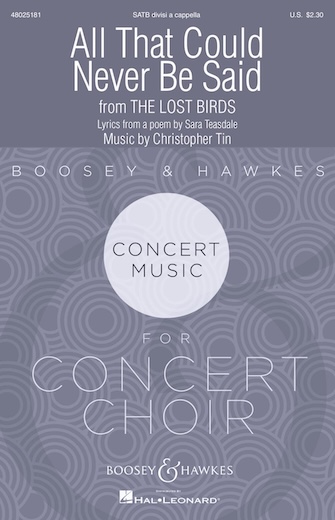
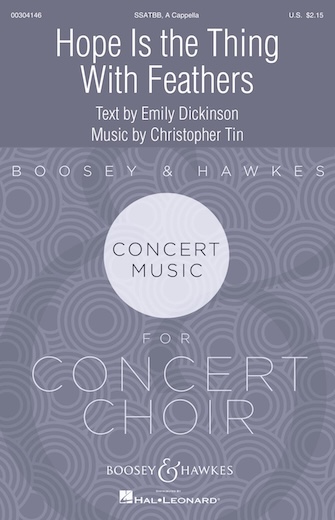
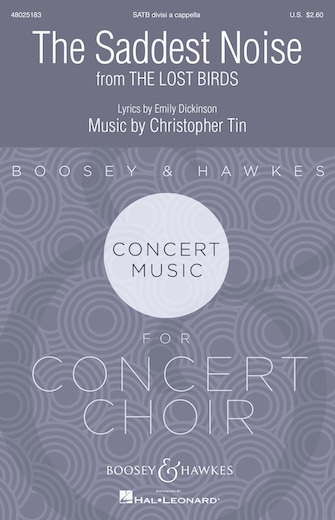
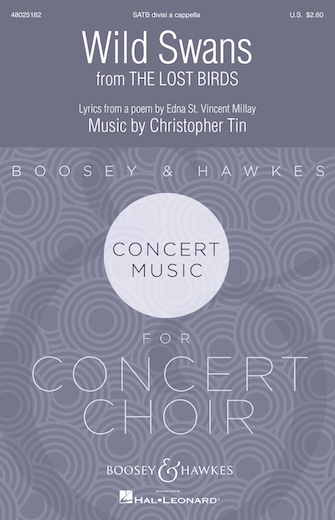
Alternate Instrumentation: Chorus and Piano Quintet; Chorus, harp, and string quartet; chorus and piano
Text: Various
Duration: 46 min
Year: 2022
Choral Octavos

ALL THAT COULD NEVER BE SAID
SSAATTBB

Hope Is the Thing with Feathers
SSATBB

The Saddest Noise
SSAATTBB

Wild Swans
SSAATTBB
The score and parts for the full version of The Lost Birds will be available for performance starting February 2023. To hire the work before then, please contact Boosey and Hawkes. In the meantime, a study score is available for purchase - see the store page for more details.
World Premiere: First performed on February 25, 2023 at Stanford University, CA, with VOCES8, the VOCES8 Foundation Scholars, the Friction Quartet, and Keisuke Nakagoshi, with Christopher Tin conducting.
Program Notes: The sky was once full of birds. Magnificent flocks so enormous that they darkened the skies for days as they flew overhead. The most awe-inspiring of these flocks belonged to a bird called the passenger pigeon. At their height, they were the most numerous bird species in North America, with a population estimated at 5 billion. But over the course of a few decades, we eradicated them for food, using nothing but the crudest 19th-century hunting technology. With callous indifference, we simply shot them out of the sky, one by one, until their songs were never heard again.
The Lost Birds is a memorial for their loss, and the loss of other species due to human activity. It's a celebration of their beauty--as symbols of hope, peace, and renewal. But it also mourns their absence--through the lonely branches of a tree, or the fading echoes of distant bird cries. And like the metaphor of the canary in the coal mine, it's also a warning: that unless we reverse our course, the fate that befell these once soaring flocks will be a foreshadowing of our own extinction.
FROM CHRISTOPHER: "To pay proper tribute to these birds, I adopted a distinctly 19th-century musical vocabulary: one based on the tunefulness of folk songs, with a string orchestra accompaniment that's both soaring and melancholy. And to put their story into words, I turned to four 19th-century poets--Emily Dickinson, Christina Rossetti, Edna St. Vincent Millay, and Sara Teasdale. These women saw their world transform from a pastoral society to an industrial one--one in which humans, for the first time, began disastrously reshaping the environment. And the poems which I selected depict an increasingly fraught world: first without birds, and ultimately without humans.
We are now in the 21st century, and our tools for affecting the world around us--emissions, pesticides, deforestation--are more indiscriminate and cruelly efficient. As bird, fish, animal, and insect populations crash around us, we increasingly find ourselves in a silent world--one in which the songs of birds are heard less and less. We hope that the silence can be filled by more voices speaking up on behalf of these lost birds--for their sake, and for ours."
Program Notes: The sky was once full of birds. Magnificent flocks so enormous that they darkened the skies for days as they flew overhead. The most awe-inspiring of these flocks belonged to a bird called the passenger pigeon. At their height, they were the most numerous bird species in North America, with a population estimated at 5 billion. But over the course of a few decades, we eradicated them for food, using nothing but the crudest 19th-century hunting technology. With callous indifference, we simply shot them out of the sky, one by one, until their songs were never heard again.
The Lost Birds is a memorial for their loss, and the loss of other species due to human activity. It's a celebration of their beauty--as symbols of hope, peace, and renewal. But it also mourns their absence--through the lonely branches of a tree, or the fading echoes of distant bird cries. And like the metaphor of the canary in the coal mine, it's also a warning: that unless we reverse our course, the fate that befell these once soaring flocks will be a foreshadowing of our own extinction.
FROM CHRISTOPHER: "To pay proper tribute to these birds, I adopted a distinctly 19th-century musical vocabulary: one based on the tunefulness of folk songs, with a string orchestra accompaniment that's both soaring and melancholy. And to put their story into words, I turned to four 19th-century poets--Emily Dickinson, Christina Rossetti, Edna St. Vincent Millay, and Sara Teasdale. These women saw their world transform from a pastoral society to an industrial one--one in which humans, for the first time, began disastrously reshaping the environment. And the poems which I selected depict an increasingly fraught world: first without birds, and ultimately without humans.
We are now in the 21st century, and our tools for affecting the world around us--emissions, pesticides, deforestation--are more indiscriminate and cruelly efficient. As bird, fish, animal, and insect populations crash around us, we increasingly find ourselves in a silent world--one in which the songs of birds are heard less and less. We hope that the silence can be filled by more voices speaking up on behalf of these lost birds--for their sake, and for ours."
SUGGESTED PROMPTS FOR CROSS-CURRICULAR EDUCATION
Music Theory/History
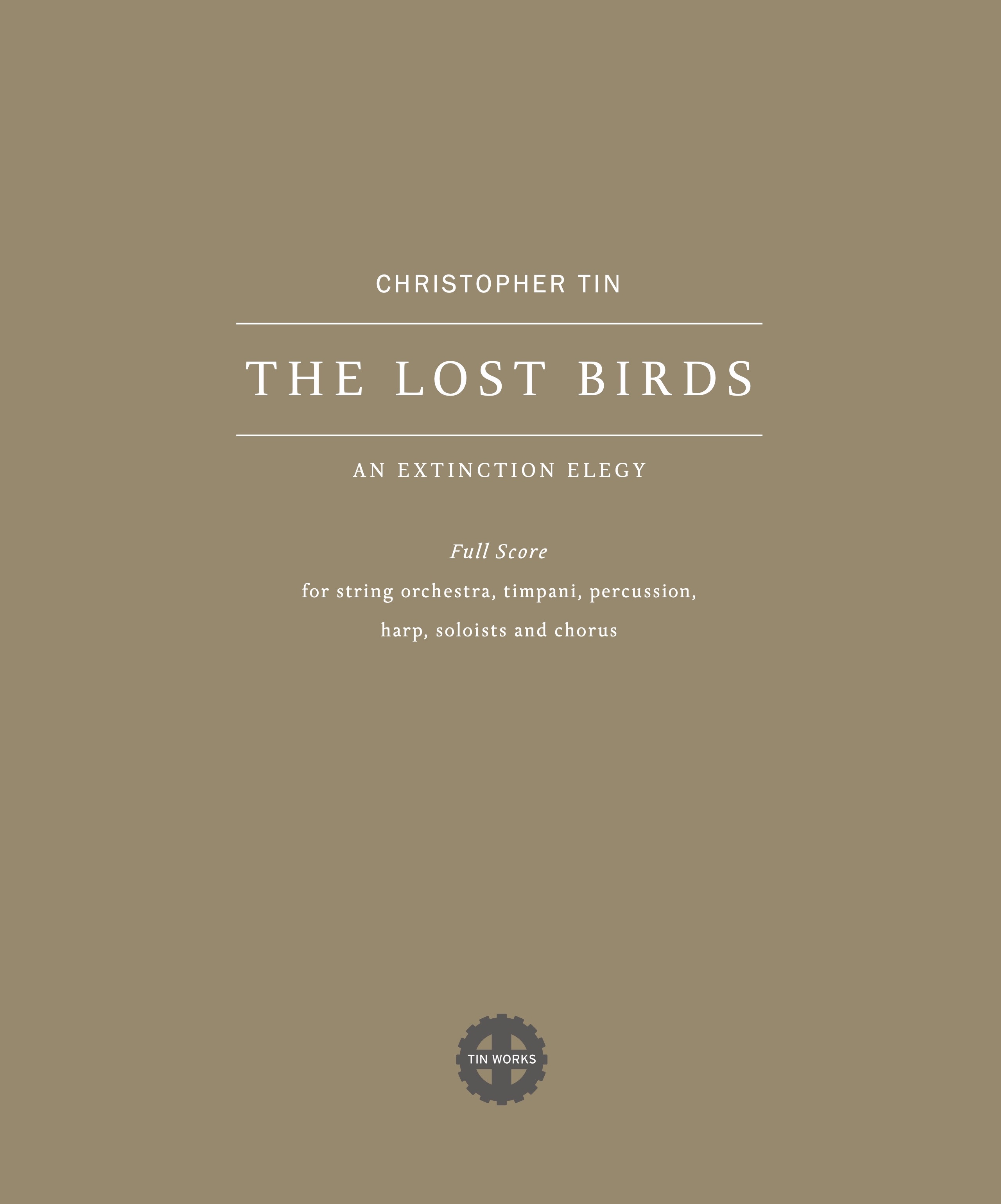
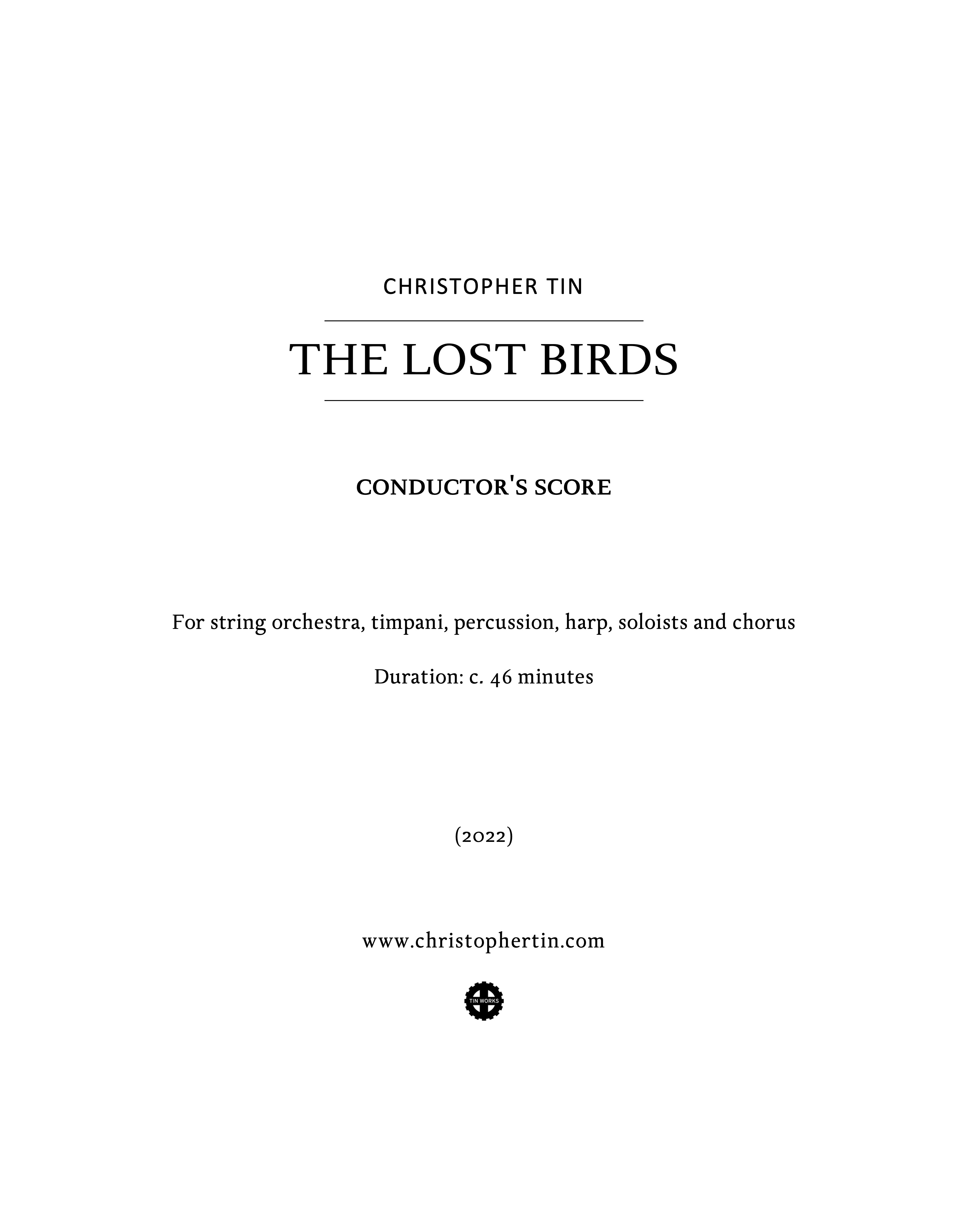
Commission Information:
- Historical Comparisons: Examine one or several vocal pieces from the same time period as the poems set in The Lost Birds (for example, works by Verdi, Wagner, either Schumann, Brahms, Bizet, R. Strauss, Vaughan-Williams, etc.). In what ways is Tin's music similar to those works? In what ways is it different?
- Idée Fixe: Examine the development of the main theme from The Lost Birds in the following movements: Flocks a Mile Wide, Intermezzo, There Will Come Soft Rains (final phrase), and Hope Is The Thing With Feathers. How does the theme change over time? How does this contribute to the programatic meaning of the piece?
- Mode and Affect: Tin makes use of a variety of modes throughout The Lost Birds. What affect is created by each mode? Why do you think Tin chose this mode for this movement/moment?
- The Poetry of Music: Do a close study of one or more of the poems set in The Lost Birds, then do a close listen to the movement. What elements of the poetry's construction contributed to the way the music flows? What elements of the poem does the music highlight?
- Examining Theme: Consider the poems as a whole. What themes come up multiple times? How does the perspective on them change over time? What does this mean for the overarching theme of the work?
- 19th Century Women Poets and Reticence: Examine the patriarchy enforced self-censorship (or subversion thereof) present in the poems of The Lost Birds. Is this reflected in the music? How or how not?
- Local Bird Life: Have students select a bird native to their area, and investigate all its environmental needs. What threats are there to those needs? What is needed to keep that bird species healthy?
- Extinction: Examine the historical and contemporary causes of extinctions, and what the effects of extinction can be on other parts of ecosystems. How does this knowledge effect your understanding of The Lost Birds?
- Supporting Birds At Home: Ask students, individually or in groups, to select one article from Audubon about how individuals can make their homes more bird friendly, and present to the class both the suggested activity and why it is beneficial to bird life.
- Global Climate Change: The Lost Birds reflects upon extinct bird species, but it also encourages reflection upon the instability of the human species, too. How has human activity caused past species extinctions? Does human activity post that same threat to humans?
- The Canary in the Coal Mine: The Lost Birds makes the case that birds are the 'canary in the coal mine' in terms of global climate change. Learn about the historical origin of the phrase, and consider how this is analogous to bird extinction and climate change.
- Music as Activism: The Lost Birds advocates for environmental action to protect the planet and its life. How has music created change in the past? Consider, for example, protest music during The Vietnam War, or the role of music in the Civil Rights Movement.
- Legislating Change: Often legislation striving to combat climate change is controversial. Have students look into a law, or proposed law aimed at targeting a climate issue. Lead a socratic seminar encouraging students to examine both sides of the issue with curiosity and compassion. What possible solutions could satisfy the concerns of both parties? If this is not possible, what are the root causes of these incompatible differences?
OTHER AVAILABLE EDITIONS

Study Score
Complete transcription of the album
Timp+1/Harp/Strings
Worldwide Physical Purchase: webstore
Complete transcription of the album
Timp+1/Harp/Strings
[Perc:Sus Cym, Vibes, Tub Bells, Crot, Opt. Glock]
Worldwide Physical Purchase: webstore

Full Score and Parts
Timp+1/Harp/Strings
Worldwide Rental: Boosey & Hawkes
Timp+1/Harp/Strings
[Perc:Sus Cym, Vibes, Tub Bells, Crot, Opt. Glock]
Worldwide Rental: Boosey & Hawkes
Commission Information:
- “The Saddest Noise” was commissioned by Swagata “Ban” Banerjee, one-half of the duo Ban Brothers, in dedication to their late dad Sukumar Banerjee, an unsung musical genius.
- “Bird Raptures” was commissioned by Ulf Jonsson.
- “One Hundred Thousand Birds” was commissioned by Piotr Michalak.
- “Wild Swans” was commissioned by Jay Han in honor of those who gave him the courage to soar.
- “Thus in the Winter” was commissioned by David Byard in celebration of the creative spirit.
- “All That Could Never Be Said” was commissioned by Dr. Timothy M. Hsia for the ecologists and educators at the Smithsonian Tropical Research Institute in Panama, who continue to help us understand the past, present, and future of our planet’s astounding biodiversity.
- “I Shall Not See the Shadows” was commissioned by Agapella (Singapore) in commemoration of its 20th anniversary.
- “In the End” was commissioned by Dr. Timothy M. Hsia for his goddaughter, Ms. Isla Chow.
- “Hope Is the Thing with Feathers" was commissioned by the Palo Alto High School Campus for their Centennial Celebration and first performed by the Palo Alto High School Choir on October 7th, 2019.